Yiqun Ge
Reliable Extraction of Semantic Information and Rate of Innovation Estimation for Graph Signals
Nov 10, 2022
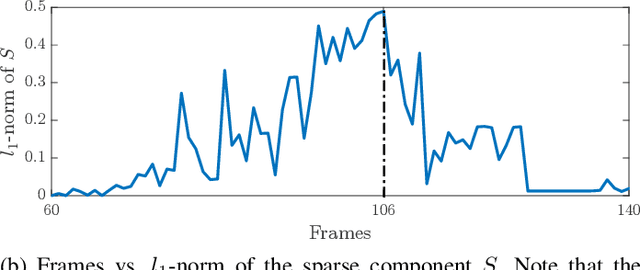

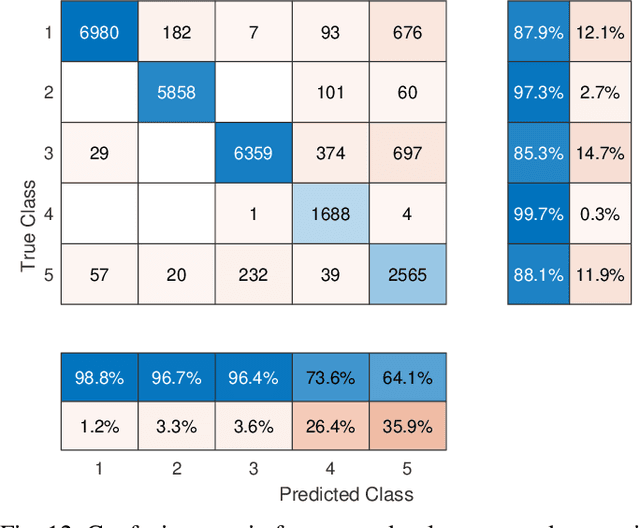
Abstract:Semantic signal processing and communications are poised to play a central part in developing the next generation of sensor devices and networks. A crucial component of a semantic system is the extraction of semantic signals from the raw input signals, which has become increasingly tractable with the recent advances in machine learning (ML) and artificial intelligence (AI) techniques. The accurate extraction of semantic signals using the aforementioned ML and AI methods, and the detection of semantic innovation for scheduling transmission and/or storage events are critical tasks for reliable semantic signal processing and communications. In this work, we propose a reliable semantic information extraction framework based on our previous work on semantic signal representations in a hierarchical graph-based structure. The proposed framework includes a time integration method to increase fidelity of ML outputs in a class-aware manner, a graph-edit-distance based metric to detect innovation events at the graph-level and filter out sporadic errors, and a Hidden Markov Model (HMM) to produce smooth and reliable graph signals. The proposed methods within the framework are demonstrated individually and collectively through simulations and case studies based on real-world computer vision examples.
Distributed Learning for Time-varying Networks: A Scalable Design
Jul 31, 2021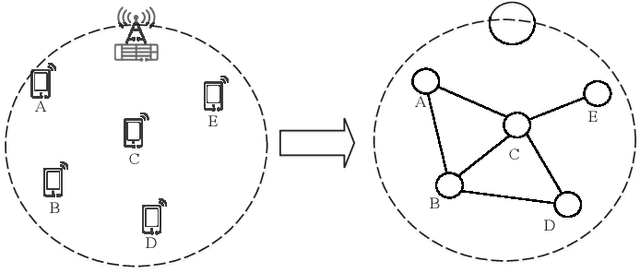
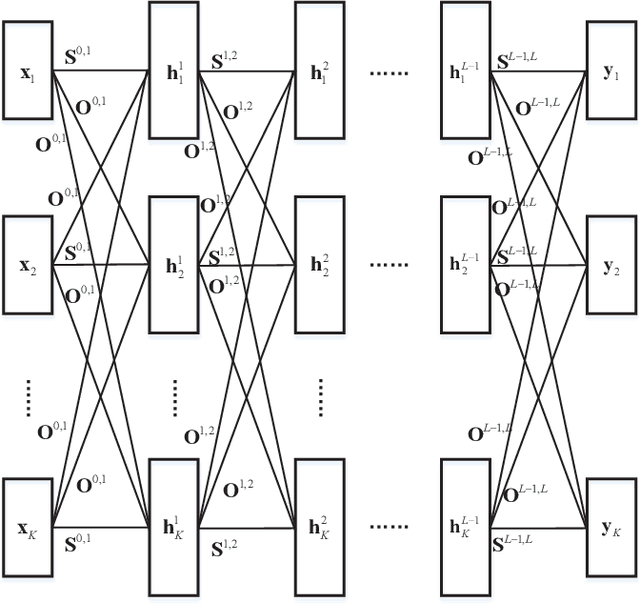
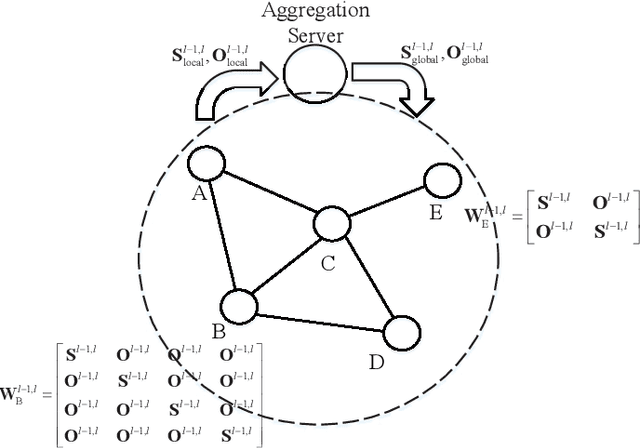
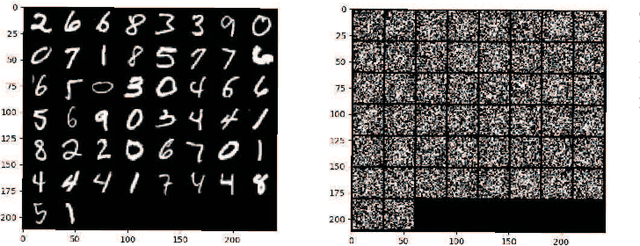
Abstract:The wireless network is undergoing a trend from "onnection of things" to "connection of intelligence". With data spread over the communication networks and computing capability enhanced on the devices, distributed learning becomes a hot topic in both industrial and academic communities. Many frameworks, such as federated learning and federated distillation, have been proposed. However, few of them takes good care of obstacles such as the time-varying topology resulted by the characteristics of wireless networks. In this paper, we propose a distributed learning framework based on a scalable deep neural network (DNN) design. By exploiting the permutation equivalence and invariance properties of the learning tasks, the DNNs with different scales for different clients can be built up based on two basic parameter sub-matrices. Further, model aggregation can also be conducted based on these two sub-matrices to improve the learning convergence and performance. Finally, simulation results verify the benefits of the proposed framework by compared with some baselines.
Smart Scheduling based on Deep Reinforcement Learning for Cellular Networks
Mar 22, 2021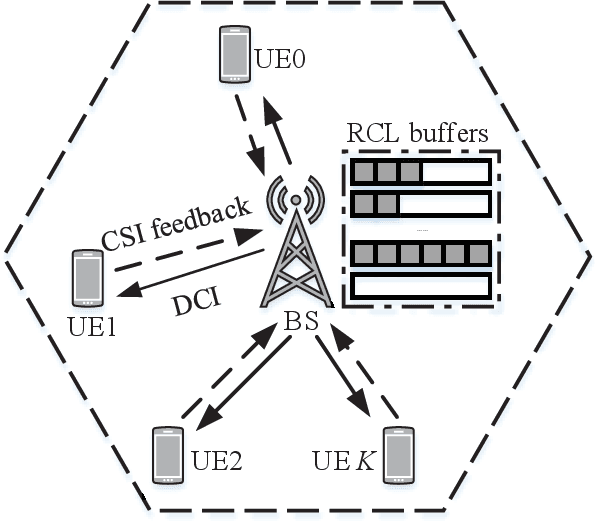
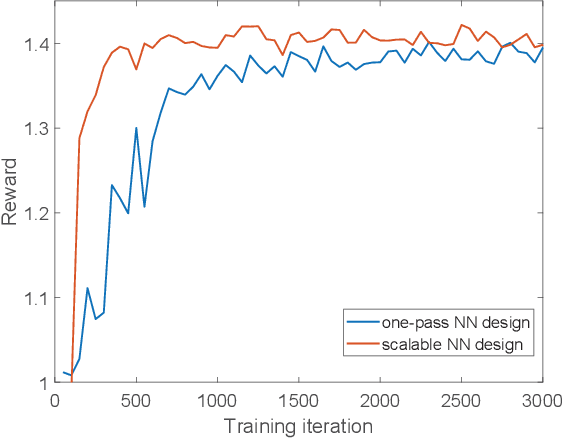
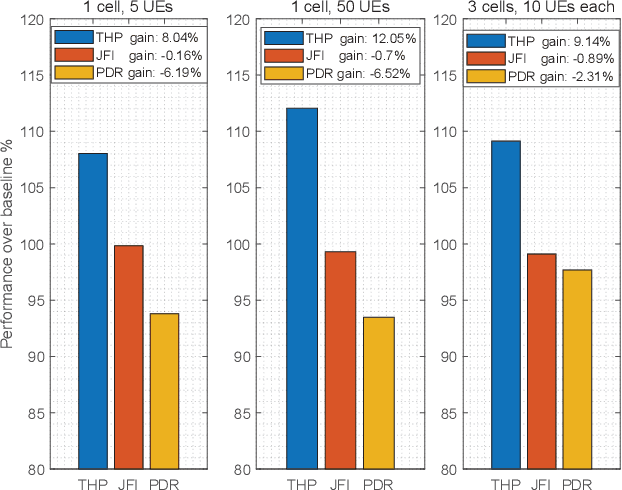
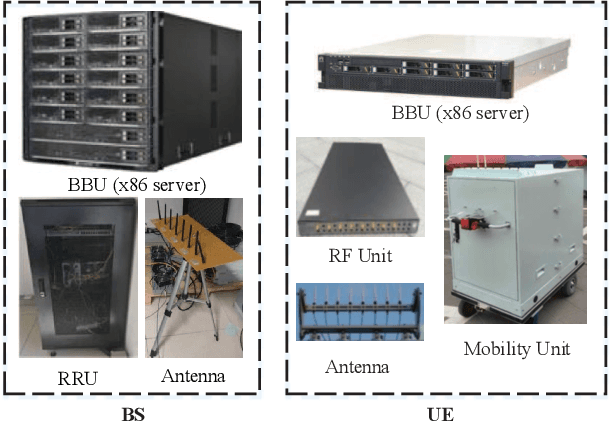
Abstract:To improve the system performance towards the Shannon limit, advanced radio resource management mechanisms play a fundamental role. In particular, scheduling should receive much attention, because it allocates radio resources among different users in terms of their channel conditions and QoS requirements. The difficulties of scheduling algorithms are the tradeoffs need to be made among multiple objectives, such as throughput, fairness and packet drop rate. We propose a smart scheduling scheme based on deep reinforcement learning (DRL). We not only verify the performance gain achieved, but also provide implementation-friend designs, i.e., a scalable neural network design for the agent and a virtual environment training framework. With the scalable neural network design, the DRL agent can easily handle the cases when the number of active users is time-varying without the need to redesign and retrain the DRL agent. Training the DRL agent in a virtual environment offline first and using it as the initial version in the practical usage helps to prevent the system from suffering from performance and robustness degradation due to the time-consuming training. Through both simulations and field tests, we show that the DRL-based smart scheduling outperforms the conventional scheduling method and can be adopted in practical systems.
Buffer-aware Wireless Scheduling based on Deep Reinforcement Learning
Nov 13, 2019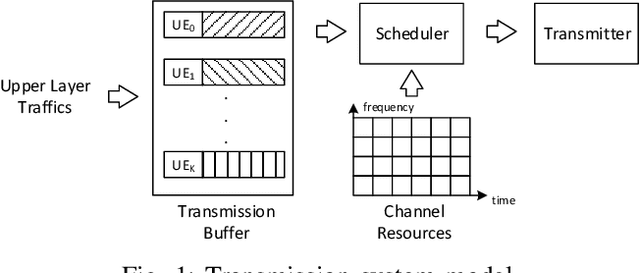
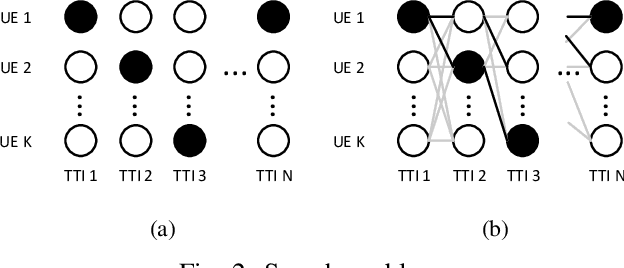
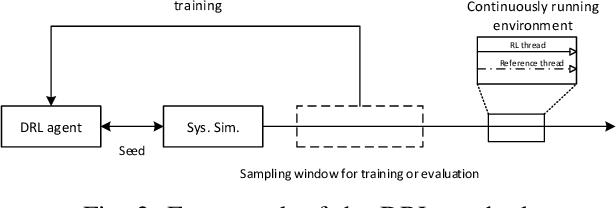
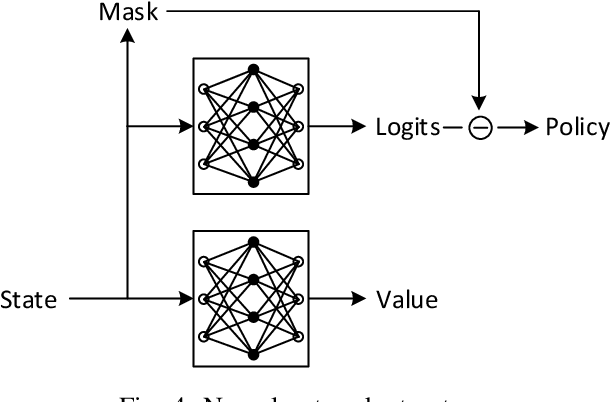
Abstract:In this paper, the downlink packet scheduling problem for cellular networks is modeled, which jointly optimizes throughput, fairness and packet drop rate. Two genie-aided heuristic search methods are employed to explore the solution space. A deep reinforcement learning (DRL) framework with A2C algorithm is proposed for the optimization problem. Several methods have been utilized in the framework to improve the sampling and training efficiency and to adapt the algorithm to a specific scheduling problem. Numerical results show that DRL outperforms the baseline algorithm and achieves similar performance as genie-aided methods without using the future information.
Realistic Channel Models Pre-training
Jul 22, 2019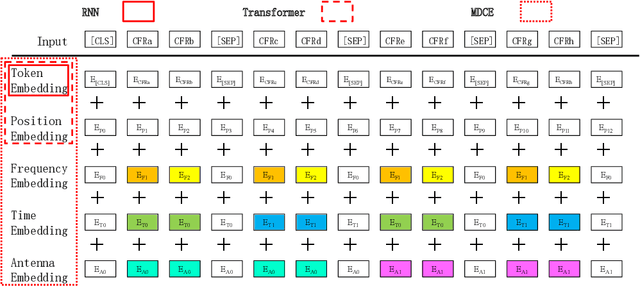
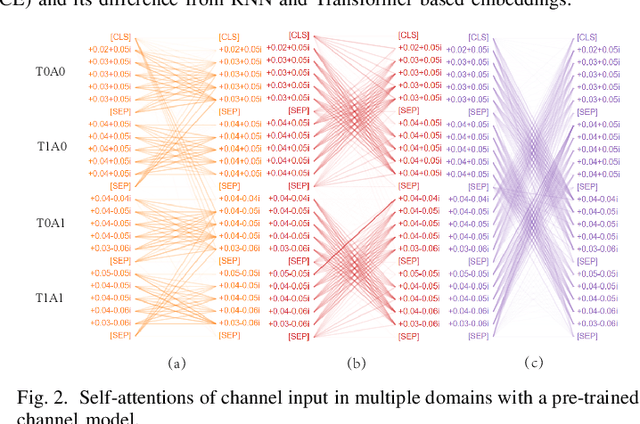
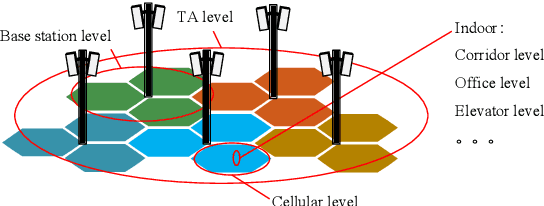
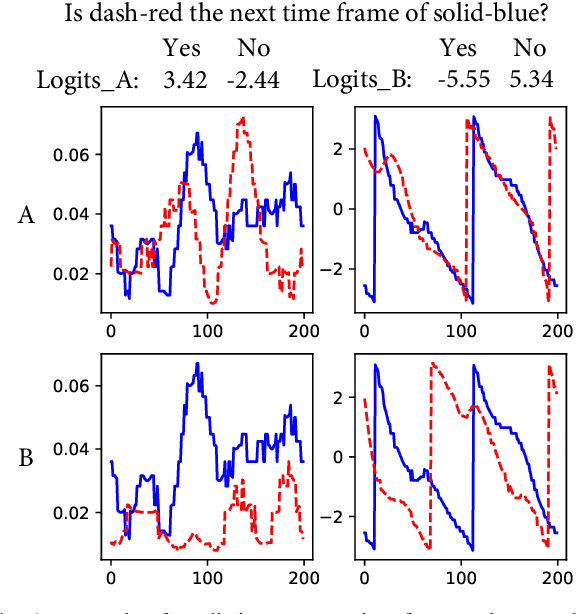
Abstract:In this paper, we propose a neural-network-based realistic channel model with both the similar accuracy as deterministic channel models and uniformity as stochastic channel models. To facilitate this realistic channel modeling, a multi-domain channel embedding method combined with self-attention mechanism is proposed to extract channel features from multiple domains simultaneously. This 'one model to fit them all' solution employs available wireless channel data as the only data set for self-supervised pre-training. With the permission of users, network operators or other organizations can make use of some available user specific data to fine-tune this pre-trained realistic channel model for applications on channel-related downstream tasks. Moreover, even without fine-tuning, we show that the pre-trained realistic channel model itself is a great tool with its understanding of wireless channel.
Deep Reinforcement Learning for Scheduling in Cellular Networks
May 15, 2019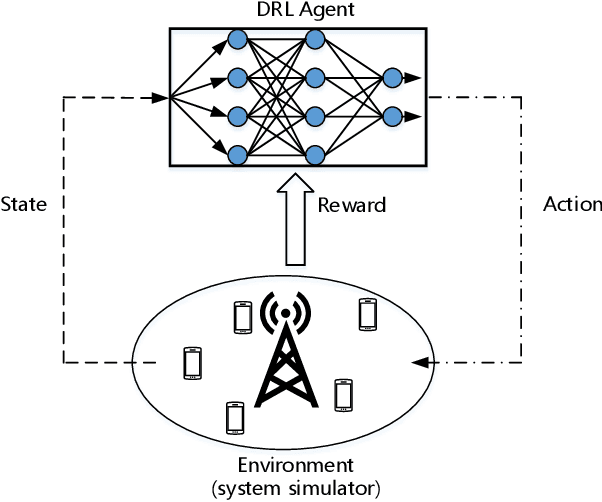
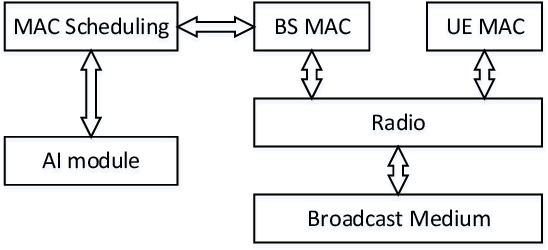
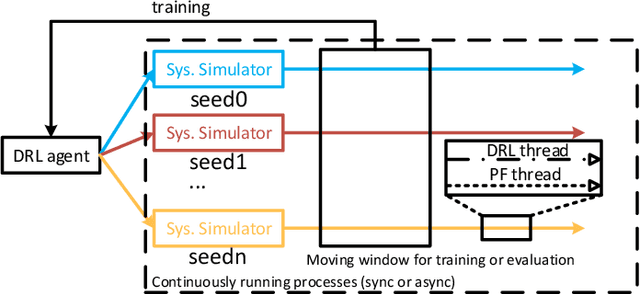
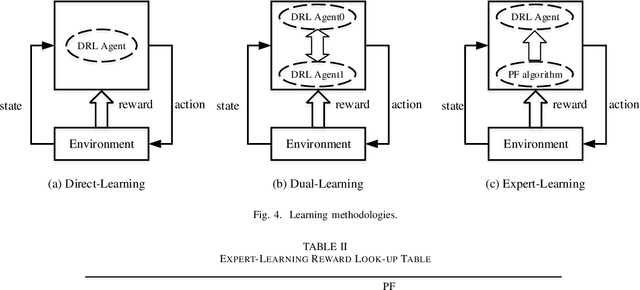
Abstract:Integrating artificial intelligence (AI) into wireless networks has drawn significant interest in both industry and academia. A common solution is to replace partial or even all modules in the conventional systems, which is often lack of efficiency and robustness due to their ignoring of expert knowledge. In this paper, we take deep reinforcement learning (DRL) based scheduling as an example to investigate how expert knowledge can help with AI module in cellular networks. A simulation platform, which has considered link adaption, feedback and other practical mechanisms, is developed to facilitate the investigation. Besides the traditional way, which is learning directly from the environment, for training DRL agent, we propose two novel methods, i.e., learning from a dual AI module and learning from the expert solution. The results show that, for the considering scheduling problem, DRL training procedure can be improved on both performance and convergence speed by involving the expert knowledge. Hence, instead of replacing conventional scheduling module in the system, adding a newly introduced AI module, which is capable to interact with the conventional module and provide more flexibility, is a more feasible solution.
Reinforcement Learning for Nested Polar Code Construction
Apr 16, 2019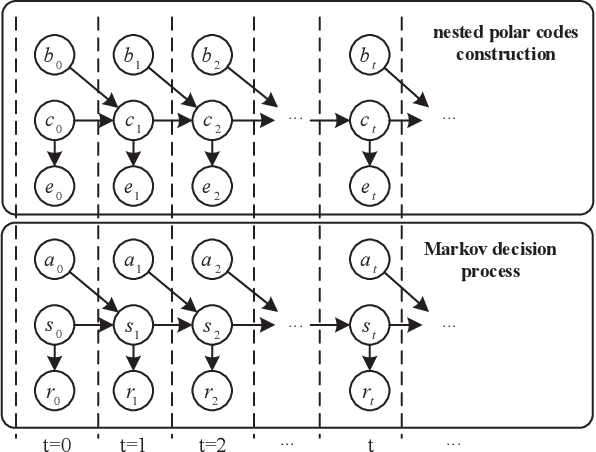
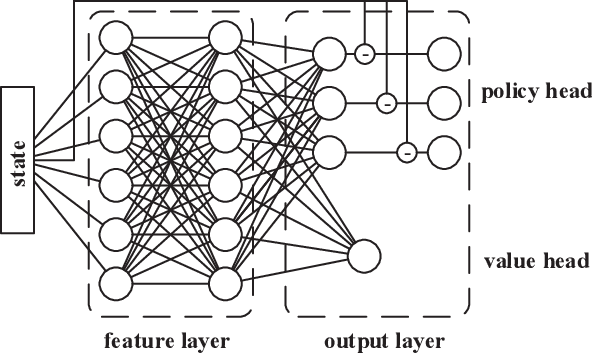
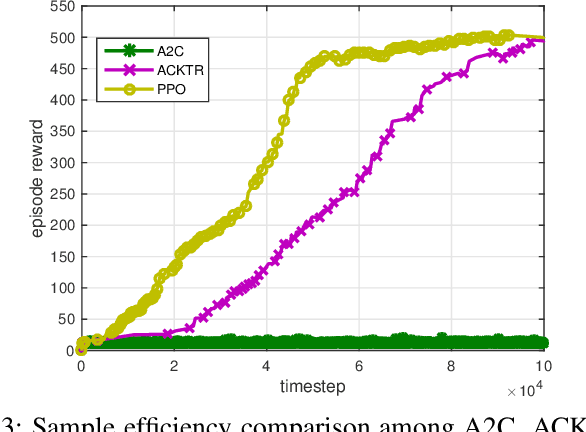
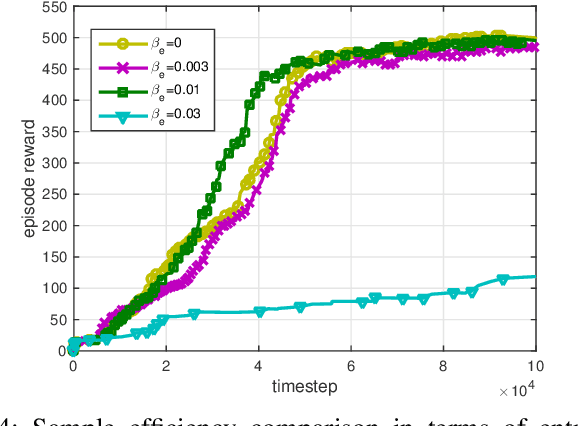
Abstract:In this paper, we model nested polar code construction as a Markov decision process (MDP), and tackle it with advanced reinforcement learning (RL) techniques. First, an MDP environment with state, action, and reward is defined in the context of polar coding. Specifically, a state represents the construction of an $(N,K)$ polar code, an action specifies its reduction to an $(N,K-1)$ subcode, and reward is the decoding performance. A neural network architecture consisting of both policy and value networks is proposed to generate actions based on the observed states, aiming at maximizing the overall rewards. A loss function is defined to trade off between exploitation and exploration. To further improve learning efficiency and quality, an `integrated learning' paradigm is proposed. It first employs a genetic algorithm to generate a population of (sub-)optimal polar codes for each $(N,K)$, and then uses them as prior knowledge to refine the policy in RL. Such a paradigm is shown to accelerate the training process, and converge at better performances. Simulation results show that the proposed learning-based polar constructions achieve comparable, or even better, performances than the state of the art under successive cancellation list (SCL) decoders. Last but not least, this is achieved without exploiting any expert knowledge from polar coding theory in the learning algorithms.
 Add to Chrome
Add to Chrome Add to Firefox
Add to Firefox Add to Edge
Add to Edge